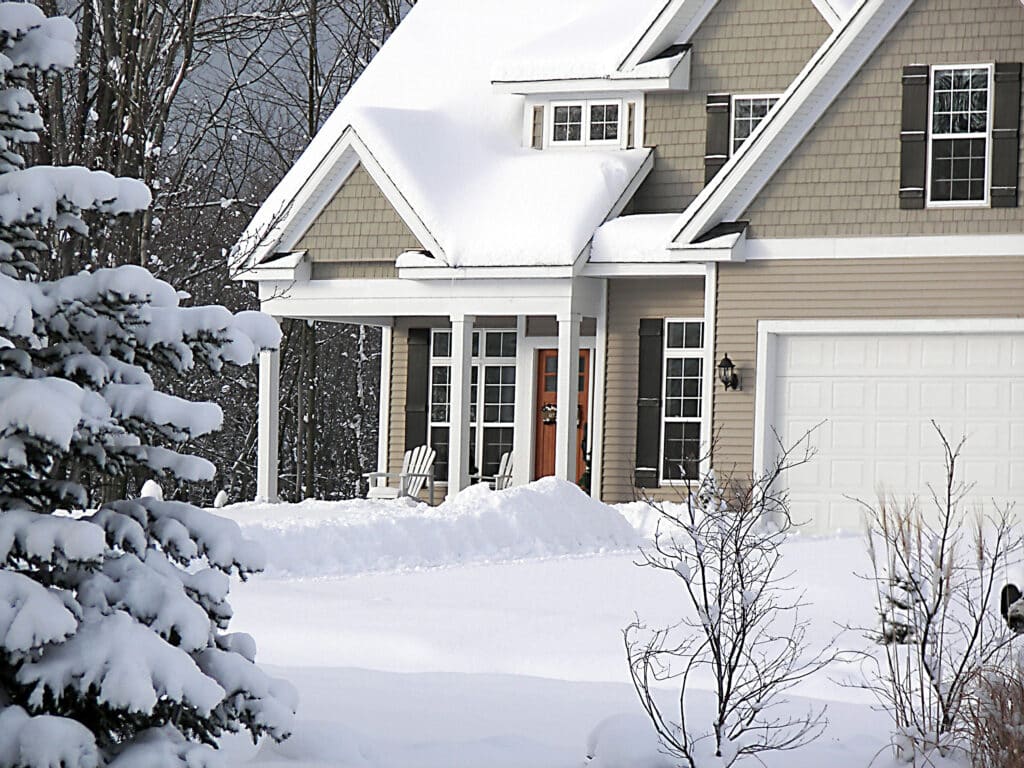Winter seems to be delayed this year, but it is coming. It’s crucial to ensure your roof is ready for the cold weather. One often overlooked aspect of winterizing your home is preparing your roof for the harsh weather conditions it will face. A well-maintained roof not only safeguards your home but also contributes to energy efficiency. That’s why this month, our NH roofers from Tip Top Roofing are here to walk you through essential steps to prepare your roof for winter.
Inspect Your Roof
Start by conducting a thorough inspection of your roof. Look for missing or damaged shingles, as they can lead to leaks and structural issues. Pay attention to areas around chimneys, vents, and skylights, as these are common trouble spots. If you notice any problems, address them promptly to prevent further damage.
Clean Gutters and Downspouts
Clogged gutters and downspouts can cause water to back up, leading to ice dams and potential roof damage. Clear out leaves, debris, and any blockages to ensure proper water drainage. Consider installing gutter guards to prevent future build-ups and make the cleaning process easier.
Trim Overhanging Branches
Winter storms can bring heavy snow and ice, which may weigh down branches and cause them to break and fall onto your roof. Trim overhanging branches to prevent potential damage and ensure the safety of your home during winter storms.
Check for Leaks
Inspect your attic for any signs of leaks. Water stains on the ceiling, damp insulation, or mold growth are indicators of potential leaks. Addressing these issues promptly can prevent further damage and protect your home from water infiltration during winter.
Insulate Your Attic
Proper attic insulation helps regulate indoor temperature and prevents the formation of ice dams. Ensure that your attic is adequately insulated to keep warm air from escaping, reducing the risk of snow melting on the roof and refreezing at the eaves.
Ventilation Matters
Proper ventilation is crucial for maintaining a healthy roof. Ensure that your attic is well-ventilated to prevent the buildup of moisture, which can lead to mold and rot. Proper ventilation also helps regulate temperature, reducing the risk of ice dam formation.
Seal Gaps and Cracks:
Inspect the roof for any gaps, cracks, or openings. Seal them with appropriate materials to prevent cold air from entering and warm air from escaping. This will not only improve energy efficiency but also protect your roof from the elements.
Snow Removal Strategy
After heavy snowfall, consider a proactive approach to snow removal. Use a roof rake to safely remove excess snow to prevent the formation of ice dams. Be cautious and avoid damaging shingles or other roofing materials during this process.
Tip Top Roofing | NH Roofers
If you’re in need of roof repairs and other services this winter season, you can rely on our NH roofers at Tip Top Roofing to get the job done. To schedule an appointment, we encourage you to contact our team today or check out our website to discover a complete list of our services.
